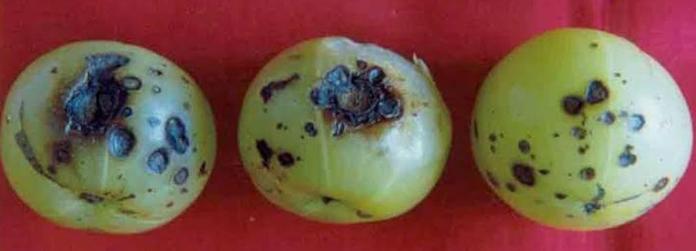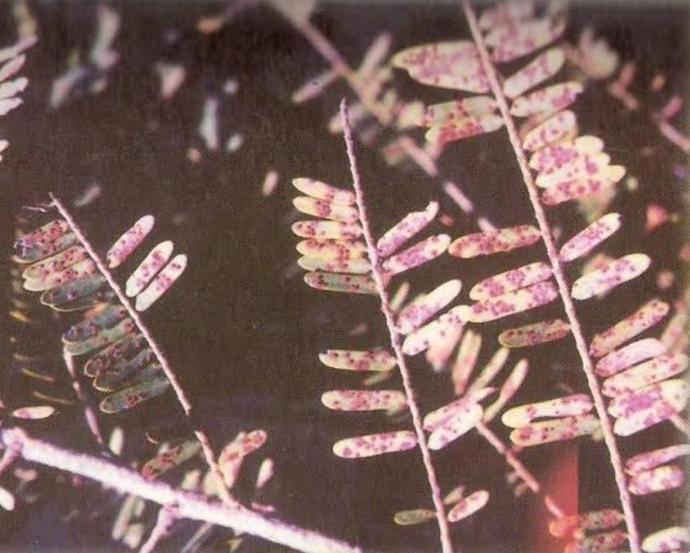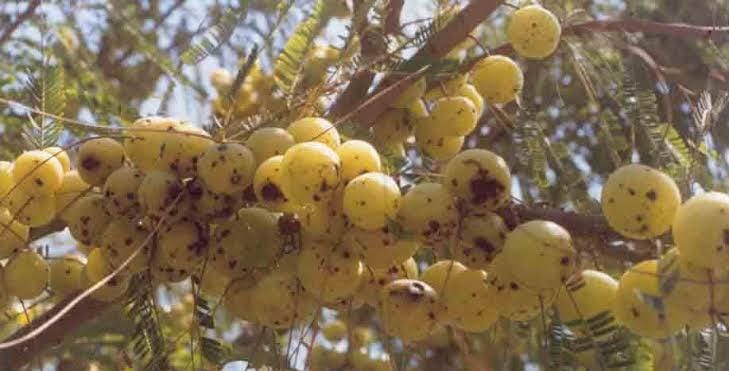Amla(ఉసిరి) Plant
Amla(ఉసిరి) trees [common name Rathi Vusiri] with moderate growth, thrive in well-drained soil and full sun. Hardy in zones 10-12, Amla fruits are known for their high vitamin C content and medicinal properties.

Habit
Tree
Height
20-30 ft
Growth
Moderate
Soil
Well Drained
Shade
Full Sun
Moisture
Moderate
Edible
Yes
Medicinal
Yes
Origin
India
Climatic Condition
Tropical, Sub tropical
Temperature (°)
20-35
Humidity (%)
60-80%
Potting media
Peat+Perlite
Fertilizers
Balanced NPK(10:10:10)
Watering
Regular Watering
Plant Weight
200-300 g
Flowering Time
Winter to Spring
Soil Ph level
6.0-7.5
Water Ph level
6.0-7.0
Soil EC
0.8 dS/m
Yield Per Plant
50-70 kg of fruit (10 years old)
NPK ratio
10:10:10
life Span
30-50 yrs
Health Benefits
Rich in Vitamin C, Immune Booster, Remove Body Toxins, Anti-oxidant
Suggested Grow Media or Potting Mix ?
50% loam, 30% sand, 20% compost
Suggested Fertigation/Fertilizers
Fertilize every 2 months with a balanced fertilizer.
Common Diseases and Remedies
Leaf Rust , Soft Rot
Black Pustules on Leaves , Brown Discolouration and deformed fruits
removal of infected leaves, use Neem Seed Kernel Extract
HEALTH BENEFITS
Amla (Indian Gooseberry) is packed with nutrients and has numerous health benefits:
1. Rich in Vitamin C
Amla is one of the best sources of vitamin C, which boosts immunity, promotes skin health, and improves iron absorption.
2. Improves Digestion
It enhances digestion, relieves constipation, and supports gut health due to its high fiber and antioxidant content.
3. Supports Heart Health
Amla helps lower cholesterol, reduces blood pressure, and prevents plaque buildup in arteries, reducing the risk of heart disease.
4. Boosts Immunity
Its antibacterial and anti-inflammatory properties help the body fight infections and improve overall immunity.
5. Promotes Hair Growth
Amla strengthens hair follicles, prevents dandruff, and slows down premature graying due to its rich vitamin and mineral content.
6. Regulates Blood Sugar
Amla helps lower blood sugar levels, making it beneficial for people with diabetes.
7. Enhances Skin Health
Its antioxidants reduce wrinkles, promote collagen production, and give the skin a natural glow.
8. Supports Liver Function
Amla detoxifies the liver, helping in better digestion and metabolism.
9. Improves Eye Health
Rich in vitamin A and antioxidants, amla helps improve vision and reduces the risk of cataracts.
10. Helps in Weight Management
Amla boosts metabolism and aids in fat burning, making it useful for weight loss
What Is An Amla(ఉసిరి) Tree?
Indian gooseberry, also known as Indian gooseberry, is a small fruit tree native to India. Amla harvesting usually involves picking yellow-green fruits from the tree. Indian gooseberry berries are usually hand-picked in late summer or early autumn when they are ripe but still frozen. Once harvested, the fruits can be used fresh, dried, or processed into a variety of products such as juice, flour, or pickles. Proper care and pruning of Amla plants helps produce healthy fruits.

What Are The Different Types Of Amla(ఉసిరి) Plants?
1. Banarasi
Known for its large fruits and high productivity.
2. Chakaiya
Popular due to its sweet fruit taste and adaptability to different soil types.
3. NA-7
Known for its high productivity and resistance to pests and diseases.
4. Kanchan
Known for its early fruiting and drought tolerance.
5. Krishna
Known for its large fruit size and high ascorbic acid content.
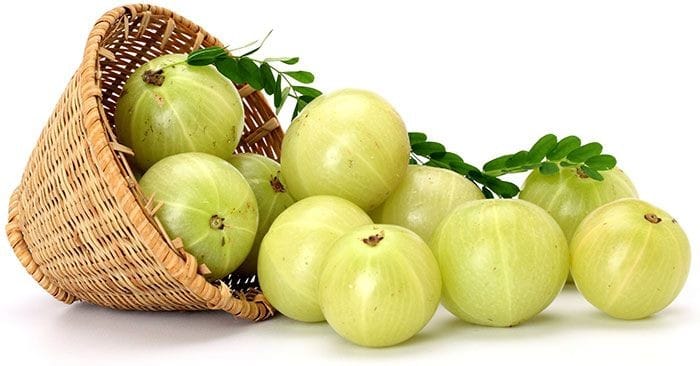
How to Care for Amla(ఉసిరి) Plant ?
1. Location
Indian Gooseberry trees are often grown outdoors in warm climates because they need full sun and good soil to thrive. However, in cold climates or areas where outdoor space is limited, the Amla tree can be grown indoors in large containers or pots. Some thoughts on growing gooseberry trees indoors.
2. Sunshine
Indian Gooseberry trees grow well in full sun. They need at least 6-8 hours of direct sunlight per day for growth and fruiting. Adequate sunlight is necessary for photosynthesis, the process by which plants generate energy and produce food. Insufficient sunlight can result in poor growth, reduced fruit production and overall health of the tree. Therefore, when planting or placing your Amla tree, it is important to choose a location that receives full sun to ensure its growth and development.
3. Soil
Indian Gooseberry trees prefer well-drained, slightly acidic soil for optimum growth and fruit production. Some characteristics of ideal soil for Amla trees are: Indian Gooseberry trees do not tolerate waterlogging. Therefore, the soil must be well-drained to prevent water from accumulating around the roots and causing root rot. Well-drained sandy loam or loam is suitable. A pH between 5.5 and 7.0 is ideal for gooseberry trees. Slightly acidic soil allows roots to better absorb nutrients. You can test soil pH using a soil pH test kit and correct it if necessary using organic or pH correcting additives. Adding organic matter such as compost, well-rotted manure or leaf mould to the soil before planting will increase the soil structure, fertility and moisture retention. Organic matter also supports microbial benefits in the soil. Fertilize the tree with a balanced fertilizer formulated for fruit trees according to the manufacturer's instructions. The soil must have a loose, friable texture so that the roots can easily access and take in oxygen, water and nutrients. Compacted or heavy soils need to be amended with organic matter to improve their structure. Regular soil testing and amendments as needed will ensure your trees receive the nutrients they need for optimum performance.
4. Hydration
Proper irrigation is essential for the health and production of the Emblica tree. Here are some tips for watering your Amla tree: Once the gooseberry plant is established (usually after the first year), it generally needs to be watered less frequently, but it still needs to be watered regularly, especially during the dry season. Water deeply, allowing the water to penetrate the soil into the root zone. Newly planted Amla trees need to be watered regularly to help their roots develop. Water young trees often and deeply, keeping the soil around the roots moist at all times but not waterlogged. Depending on the weather, watering should be started every 2-3 days. Water your Amla tree in the morning or evening to reduce evaporation and ensure the plant can absorb water properly. By following these watering tips and making sure your Amla plant receives adequate moisture, you can support healthy growth, fruit production, and that all-important tree.
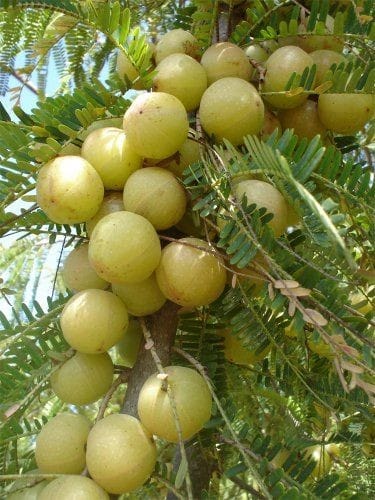
5. Nourishment
Indian gooseberry trees benefit from regular fertilization to add nutrients to the soil. Use a balanced fertilizer designed specifically for fruit trees and follow the manufacturer's instructions. Fertilize throughout the growing season (usually spring and summer) to encourage growth and fruit production. Incorporating organic matter into soil helps improve soil structure, fertility and moisture retention. Use compost, well-rotted manure or other organic material around the base of the tree and avoid direct contact with the trunk. This ensures a slow release of nutrients and increases microbial benefits in the soil.
6. Issues
Indian gooseberry trees, also known as Indian gooseberry (Emblica officinalis), can face many problems such as pests such as aphids or fruit borers, fungal diseases and food shortages. Proper maintenance, including regular inspections, organic pesticides, and balanced irrigation, can help alleviate these problems. If you have specific questions, please provide additional details for specific instructions.
What are the Benefits of Amla(ఉసిరి) Plant ?
Indian amla fruit is rich in vitamin C and contains 20 times more vitamin C than oranges. They also contain other important nutrients, including vitamin A, vitamin E, fiber, and other minerals such as calcium and phosphorus. Amla is a powerful source of antioxidants, including vitamin C and polyphenols, which help prevent oxidative stress and reduce the risk of chronic diseases such as heart disease, cancer and diabetes. The high vitamin C content in amla helps strengthen the immune system and supports the body's defense against infections and diseases. It also acts as a mild laxative. Amla has anti-inflammatory properties that help relieve symptoms like arthritis and asthma. Indian gooseberry is frequently used in hair and skin products due to its nutritional and antioxidant properties. It helps stimulate hair growth, strengthen hair follicles and prevent premature greying. Amla oil is also used to moisturize and rejuvenate the skin. Amla has hepatoprotective properties, which means it helps protect the liver from damage caused by toxins, alcohol and free radicals. It will also help treat liver diseases such as fatty liver disease. Regular consumption of amla helps lower cholesterol, control blood pressure, improve overall heart health and reduce the risk of heart disease and stroke. Amla has been shown to help control blood sugar and improve insulin resistance, beneficial for people with diabetes or those who are more likely to develop diabetes. Some studies show that bioactive compounds in Phyllanthus emblica may have anti-cancer properties, inhibiting the growth of cancer cells and reducing the risk of any cancer. Overall, the Emblica tree has many health benefits, making it useful in traditional medicine such as Ayurveda as well as in modern health and wellness.

FAQs About Growing Areca Palms
1. How to maintain amla(ఉసిరి) tree?
Maintaining an amla tree involves several key practices to ensure its health, growth, and productivity. Here are some essential maintenance tips: Provide regular and adequate watering, especially during the growing season. Water deeply to ensure moisture reaches the root zone, but avoid waterlogging the soil. Adjust watering frequency based on weather conditions and soil moisture levels. Prune the tree regularly to remove dead, diseased, or damaged branches and promote healthy growth. Pruning also helps shape the tree, improve air circulation, and encourage fruit production. Prune during the dormant season, avoiding heavy pruning during the fruiting period. Apply a layer of organic mulch, such as wood chips or straw, around the base of the tree to conserve soil moisture, suppress weeds, and regulate soil temperature. Leave a gap between the mulch and the trunk to prevent rot and pest infestations.
2. What are the uses of amla(ఉసిరి) tree ?
The amla(ఉసిరి) tree (Phyllanthus emblica) is highly valued for its various uses, including: Amla fruits are the most well-known and widely used part of the tree. They are consumed fresh, dried, or processed into various culinary products such as jams, preserves, candies, and pickles. Amla fruits are rich in vitamin C and other nutrients, making them a valuable addition to the diet. Amla has a long history of use in traditional medicine systems like Ayurveda, where it is considered a Rasayana or rejuvenating herb. Amla is used to treat a wide range of health conditions, including digestive disorders, respiratory ailments, skin problems, hair loss, and immune system support. It is also valued for its antioxidant, anti-inflammatory, and hepatoprotective properties. Amla is a common ingredient in hair care products such as shampoos, conditioners, and hair oils. It is believed to promote hair growth, strengthen hair follicles, prevent .
3. Can I grow Amla(ఉసిరి) trees indoor?
Growing an amla tree indoors requires careful attention to light, temperature, humidity, soil, watering, and fertilization. With proper care, an indoor amla tree can thrive and even produce fruit, albeit on a smaller scale compared to outdoor-grown trees.
4. Which pot is best for growing area for amla(ఉసిరి) tree?
For growing an amla tree in a pot, it's essential to choose a suitable container that provides ample space for root growth and adequate drainage. Here are some considerations for selecting the best pot .Choose a large pot that provides enough room for the amla tree's roots to spread out comfortably. A pot with a diameter of at least 18-24 inches (45-60 cm) and a depth of 18-24 inches (45-60 cm) is recommended for a young amla tree. As the tree grows, you may need to transplant it into a larger container to accommodate its increasing size. Optimum for a sturdy and durable pot made from materials like terracotta, ceramic, or plastic. Terracotta pots are porous and allow for better air circulation and moisture regulation, but they may dry out more quickly and require more frequent watering. Plastic pots are lightweight and retain moisture . Consider the weight of the pot, especially if you plan to move it frequently. While terracotta and ceramic pots are heavier, plastic pots are lighter and easier to transport. Choose a pot that complements your indoor or outdoor space aesthetically. Select a colour and design that suits your preference and blends well with the surroundings.
5. From where can i shop for amla(ఉసిరి) tree ?
Contact local gardening clubs, horticultural societies, or agricultural extension offices for recommendations on where to purchase amla trees locally. Members of these organizations may be able to provide valuable advice and resources. Attend fruit tree expos, gardening events, or plant sales in your area, where you may find vendors selling amla trees and other fruit-bearing plants. When shopping for an amla tree, choose a healthy specimen with strong roots, well-developed branches, and no signs of disease or damage. Consider factors such as tree size, variety, and suitability for your growing conditions before making a purchase.
